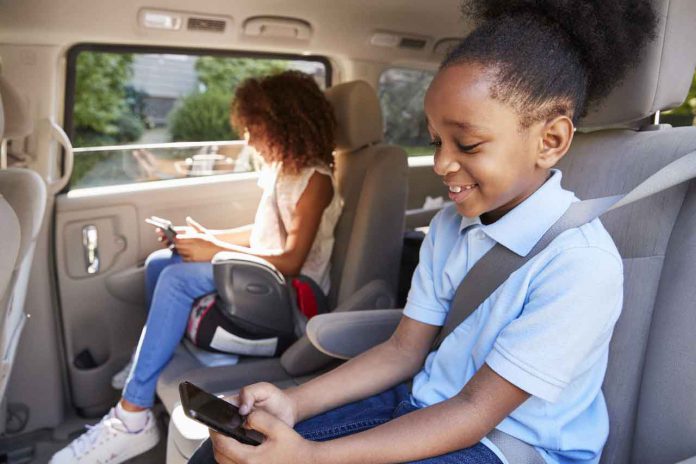Booster seats are very effective for ensuring the safety of your child during a journey. Booster seats are designed for kids who have outgrown their car seats but are still too young for adult seat belts. They help reduce the likelihood of your child being gravely hurt in a car accident.
Booster seats place your child in a higher position that allows you to cross the seat belt over properly. This article covers the effectiveness of booster seats and how they save lives.
Are Booster Seats Safe?
Car crashes are the single largest killer for children around the age of 4-8 years. Children around four years to 8 years are most vulnerable in events of car crashes. While only 43% of all of the categories of child passengers are within the range of four to eight years, a whopping 55% of child passenger injuries occur in this group. Consumer Safety Guide
Booster seats protect your child from serious injury as opposed to using only seatbelts. In a crash, booster seats can reduce your child’s risk of injury and death by as much as 59% Consumer Safety Guide Booster seats can protect your child from serious injuries in the event of a car crash.
How do Booster Seats Protect My Child?
Children not properly restrained in a car may fly forward towards the front seat or even slip out of the seat belt during an accident. When this happens, the injuries sustained can often be very serious and may even result in death or deformity. The neck and spine may be damaged, and soft organs (liver, kidney, spleen) may be crushed, effectively leaving your child maimed.
Booster seats protect your children by raising them such that the lap and shoulder seat belts of your vehicle fit correctly. Rather than the shoulder belt uncomfortably rubbing your child’s face, the booster seat positions it properly.
In accidents, the booster seat improves your child’s chances of survival. You should install one for your child once they outgrow their car seats.
How Can I Choose the Best Booster Seat for My Child?
Booster seats come at different sizes, styles, and prices. There are different types to suit the needs of your car and those of your growing child. Find a booster seat that fits suits your child.
If your child has special needs, talk to the seat expert to see which one is best suited for his needs. Generally, there are three types of booster seats available. Each has its weight limit; you should carefully read the manufacturer’s manual provided for your booster seat. Remember, booster seats are held in place by your child’s weight and the seat belts.
- Booster seat with no back – this type of booster seat is the cheapest and one of the easiest to install. This seat is suitable for children 125cm tall and weighing 15 to 22kg. However, we advise that your child stays in a backed booster until they attain a weight of 22kg.
While your backless booster seat raises your child’s height and gives your child a better chance of surviving a crash, they lack head and side protection. Your car must come with a headrest because of the lack of head support in backless booster seats. You must ensure the booster seat and your car seat belt are properly fitted before each ride.
- High Backed Booster Seats – this is the safest kind of booster seat on the market. It provides head support for your child while still raising your child’s height. These features ensure that in the case of a vehicle collision, your child is adequately protected. One advantage of the high backed booster seat is that it can be used with any car.
Generally, the minimum weight requirement for a high backed booster seat is 30 pounds. We advise that your child is kept in this booster seat until they old enough to use the seat belt properly. You can restrain your child with just seatbelts when they are about 13 years old.
What Boosters Seats Should I Avoid?
- Avoid purchasing booster seats that have been recalled by the manufacturer.
- Do not buy booster seats that you suspect have been involved in a car crash. These seats, while they may look okay, may be damaged. These damaged seats compromise your child’s safety.
- We do not advise you to get used booster seats, except you know their history. If you can get a new car seat, get one. Remember, keeping your child safe should be your priority.
Safety Tips for Your Booster Seat
Here are tips to ensure your child has the safest ride possible.
- Ensure you’re strapping in your child the right way. The booster seat manual has information to help you determine this.
- Check the booster seat every six months to ensure it supports your child’s head and neck properly. You may need to adjust it as the child grows.
- Ensure the belt is positioned across your child’s thighs and not the tummy. In a car crash, improperly positioned seatbelts lying across the tummy can damage the soft organs of your child.
- Ensure you do not leave your empty booster seat just lying loose at the back. In a crash, the seat may fly to the front seat and cause harm to your child. Be sure to strap that empty booster seat in or stuff it in the trunk of your car.
Conclusion
Booster seats are very effective in keeping your child safe during a trip. They protect your child from serious injuries in a crash by holding the child in place as well as supporting the child’s head and neck. We advise that you get a high-backed booster seat for your children once they reach the weight requirement, and you leave them in it for as long as possible.

